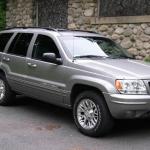Takata Airbags Lawsuit
(Updated June 2, 2023)
What: Over 100 million Takata airbag inflators are installed in vehicles worldwide.
Who: Stellantis N.V. and the Takata Corporation.
When: Takata recalls have taken place in the United States since November 18, 2014.
Where: The recall applies to all 67 million Takata airbags across the United States.
Why: The fuel in the airbag can degrade after prolonged exposure to high temperatures and humidity, which could lead to an explosion and the release of lethal metal fragments to those in the front and passenger seats.
How Can I Identify The Recalled Product?: Drivers can enter their vehicle's VIN on the National Traffic Highway Safety Administration (NHTSA) website to see if their vehicle is part of the recall.
What Are the Dangers Behind the Takata Airbags?
Due to the Takata airbags, there have been roughly 30 deaths worldwide since 2009, 24 of which were in the U.S., and more than 400 injuries in various automakers' vehicles. According to the NHTSA, the dangers behind the Takata airbags come from the design, as well as the chemical compound used to inflate the airbags, ammonium nitrate. This chemical, typically found in bombs, is a cost-efficient fertilizer and is highly flammable.
The issues with the design of the airbag have been found in the airbag inflator. Studies have found that the inflator assembly can allow moisture to seep in. Ammonium nitrate, when exposed to moisture and temperature changes over a long term, can destabilize, which can cause the inflator to aggressively deploy the airbag or even rupture and forcefully propel out metal shards.
How Long Has Takata Known About the Inflator Issues?
Records show that Takata has been aware of the issues with the inflators since at least 2004. However, the company waited until 2015 to formally acknowledge the safety risk and issue a nationwide recall. Due to the delay in notifying the public about the dangers of the inflators, in 2015, the U.S. Department of Traffic fined Takata $200 million. Then in January 2017, Takata pled guilty to criminal charges over misconduct and reached a $1 billion settlement with the U.S. Department of Justice.
Of the $1 billion settlement, $850 million is for automakers impacted by defective Takata airbags, $25 million serves as a fine, and the final $125 million is geared toward victim compensation. Due to the cost of the settlement, in June 2017, Takata filed for Chapter 11 and then agreed to be acquired for $1.6 billion by Chinese-owned Key Safety Systems.
Which Cars Have Been Recalled?
As previously mentioned, over 100 million Takata airbag inflators worldwide, including over 67 million in the U.S., over the last decade. Some of the most noted Takata recalls have been sent out by the following auto companies:
- BMW
- Chrysler
- Ferrari
- Ford
- General Motors
- Honda
- Jaguar/Land Rover
- Mazda
- Mercedes-Benz
- Mitsubishi
- Nissan
- Subaru
- Tesla
- Toyota
- Volkswagen/Audi
You can visit the NHTSA's website for a complete list of the vehicles listed in the Takata airbag recall.
How You May Qualify for a Class Action Lawsuit
Individuals who own a vehicle with the Takata airbags installed or who have suffered injuries due to the airbags are eligible to file. It is also possible for individuals to file a wrongful death suit in the case that they have lost a loved one due to the Takata airbags.
What Injuries Have Victims Suffered Due to the Takata Airbags?
Over the years, there have been multiple injuries and deaths caused by the explosive Takta airbags. Injuries more commonly found on victims have been cuts to the face, neck, throat, torso, or arms. However, victims have also suffered and could potentially suffer from the following injuries:
- Burns
- Bruises
- Broken/fractured bones
- Broken teeth
- Loss of vision
- Larynx or vocal cord injury
- Permanent disfigurement
- Permanent hearing loss or impairment
- Mild to severe brain injury
- Nerve damage
- Facial/neck/limb paralysis
If you have been involved in an accident and were injured or have lost a loved one due to the Takata airbags, you may be able to recover compensation for your damages.
What Compensation Could a Plaintiff Recover?
A Takata lawsuit may offer compensation for the following damages:
- Healthcare expenses and long-term care costs
- Loss of wages and the ability to earn a future income
- Pain and suffering
- Permanent disability
- Reduced life enjoyment
- Disfigurement
- Emotional distress
- Loss of a sense, such as eyesight or hearing
Speaking to an experienced attorney can better help you understand what you may be eligible to recover.
What Are the Lawsuits Alleging Against Takata?
Plaintiffs have claimed that due to Takata's negligence, they have suffered injuries that could have been avoided if they had been made aware of the issues behind the airbag inflator. The plaintiffs claim that if they had been properly informed, they would have halted using their vehicles until the proper repairs could have been made.
The lawsuits filed against Takata have also accused the company of the following:
- Concealing/failing to notify the defective and dangerous condition of its airbags from vehicle owners, safety regulators, and the general public
- Failing to thoroughly investigate and disclose the prevalence of the issues behind the airbags.
- Manufacturing airbag systems that contain dangerous defects.
- Negligently designing, manufacturing, testing, and selling an unsafe airbag system.
Learn More About the Takata Class Action Lawsuits
Speaking with an attorney can determine whether you have a case against Takata. For over 30 years, our firm has built a strong track record of taking on the automotive industry and winning compensation for clients.
Our attorneys have the experience and resources to take on Takata and the automakers it supplied with the faulty airbags. Our attorneys will not hesitate to take your case to trial if that means getting the best results possible. For more information regarding the Takata recalls, and to further explore your options, contact us today.
The Takata airbag class action lawsuits are still open. Contact an attorney if you own or were injured by a Takata airbag.
Did you find what you need?





